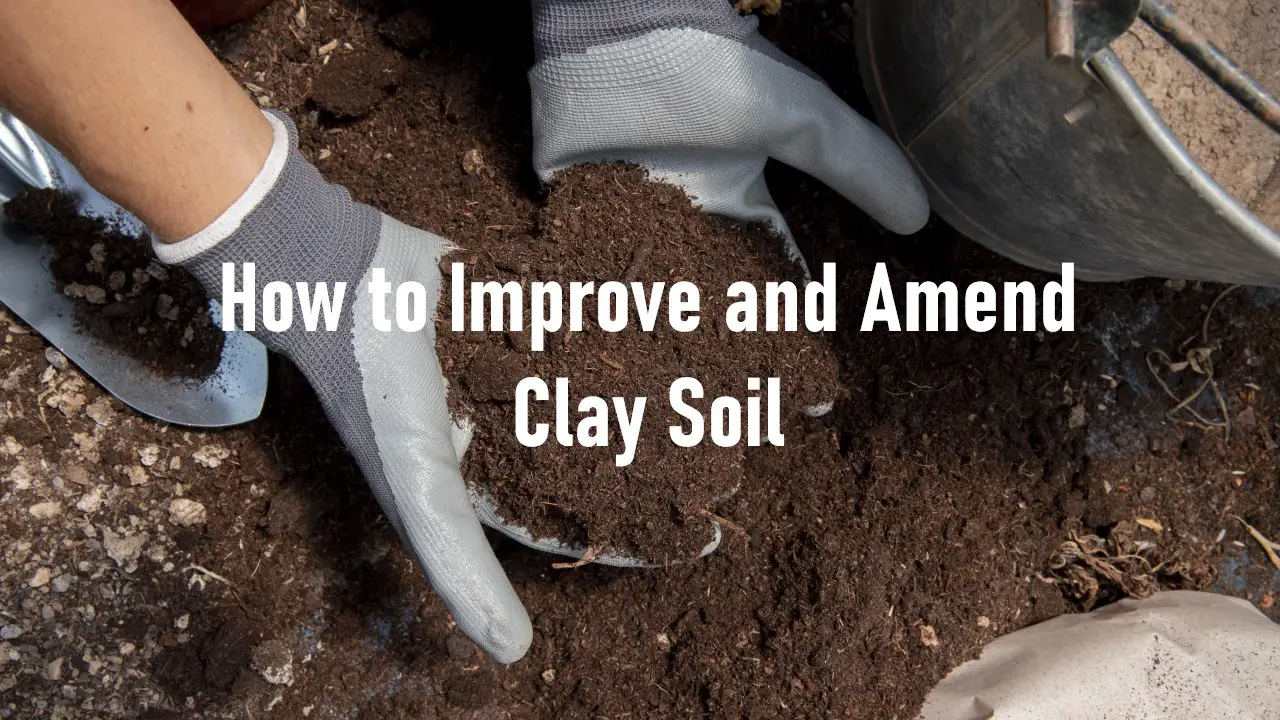Improving and amending clay soil can be a challenging task for gardeners. Clay soil is dense, heavy, and slow-draining, which can make it difficult for plants to grow and thrive. However, with the right techniques and materials, it is possible to transform clay soil into a rich, fertile growing medium.
One of the most effective ways to improve clay soil is to add organic matter. Organic matter, such as compost, peat moss, or well-rotted manure, can help to break up the dense clay particles, improve drainage, and provide essential nutrients for plants. Mixing in organic matter can also help to increase the soil’s porosity, allowing air and water to circulate more freely.
Another technique for improving clay soil is to add sand or grit. This can help to improve drainage and prevent the soil from becoming waterlogged. However, it is important to use coarse sand or grit, as fine sand can actually make the soil more compact and dense. Additionally, it is important to add sand or grit in moderation, as too much can make the soil too sandy and dry.
Page Contents
Understanding Clay Soil
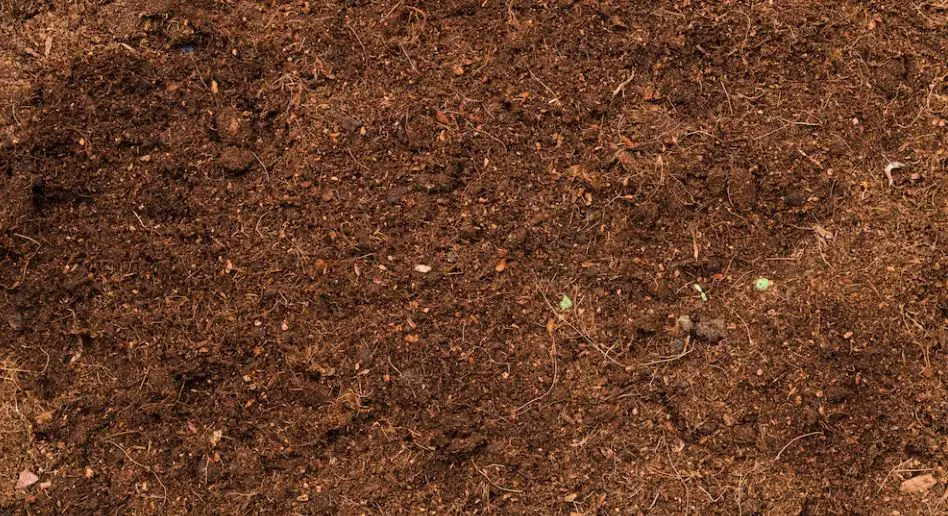
Clay soil is a soil type that is composed of fine mineral particles. It is known for its ability to retain water and nutrients, which can be beneficial for plant growth. However, it can also pose some challenges for gardeners due to its tendency to become compacted and difficult to work with.
The structure of clay soil is characterized by its small particle size, which makes it dense and heavy. This can make it difficult for air and water to penetrate the soil, which can lead to waterlogging and poor drainage. Additionally, clay soil can become compacted over time, which further exacerbates these issues.
One way to improve clay soil is by adding organic matter. This can help to improve soil structure by increasing pore space and reducing compaction. Organic matter can also help to improve drainage and aeration, which can be beneficial for plant growth.
Another way to improve clay soil is by incorporating sand or other coarse materials. This can help to increase pore space in the soil, which can improve drainage and aeration. However, it is important to be cautious when adding sand to clay soil, as adding too much can create a concrete-like substance that is difficult for plants to grow in.
Overall, understanding the structure and properties of clay soil is essential for gardeners who want to improve their soil quality. By incorporating organic matter and other amendments, it is possible to create a healthy and productive growing environment for plants.
Importance of Soil Testing
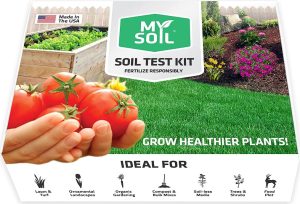 Soil testing is an essential step in improving and amending clay soil. It helps to determine the soil’s pH level, nutrient deficiencies, and other factors that affect plant growth. Soil testing should be done before planting to ensure that the soil is suitable for the plants to grow.
Soil testing is an essential step in improving and amending clay soil. It helps to determine the soil’s pH level, nutrient deficiencies, and other factors that affect plant growth. Soil testing should be done before planting to ensure that the soil is suitable for the plants to grow.
A soil test will determine the pH level of the soil, which is a measure of the soil’s acidity or alkalinity. Most plants prefer a soil pH between 6.0 and 7.0. If the soil pH is too low or too high, it can affect the availability of nutrients to the plants. For example, if the soil pH is too low, the plants may not be able to absorb enough calcium and magnesium, resulting in stunted growth and yellow leaves. On the other hand, if the soil pH is too high, the plants may not be able to absorb enough iron and manganese, leading to chlorosis.
A soil test will also determine any nutrient deficiencies in the soil. Nutrient deficiencies can affect plant growth and development. For example, a lack of nitrogen can result in stunted growth and yellow leaves, while a lack of phosphorus can lead to poor root development and weak stems. By identifying nutrient deficiencies, gardeners can add the necessary nutrients to the soil, either through fertilizers or organic matter.
There are several ways to test soil, including using a soil testing kit, sending a soil sample to a lab, or using a pH meter. Soil testing kits are easy to use and can provide quick results. However, they may not be as accurate as sending a soil sample to a lab. pH meters are also easy to use and can provide quick results, but they only measure the soil’s pH level, not nutrient deficiencies.
In conclusion, soil testing is an essential step in improving and amending clay soil. It helps to determine the soil’s pH level, nutrient deficiencies, and other factors that affect plant growth. By identifying these factors, gardeners can add the necessary nutrients to the soil, either through fertilizers or organic matter, to ensure that their plants grow healthy and strong.
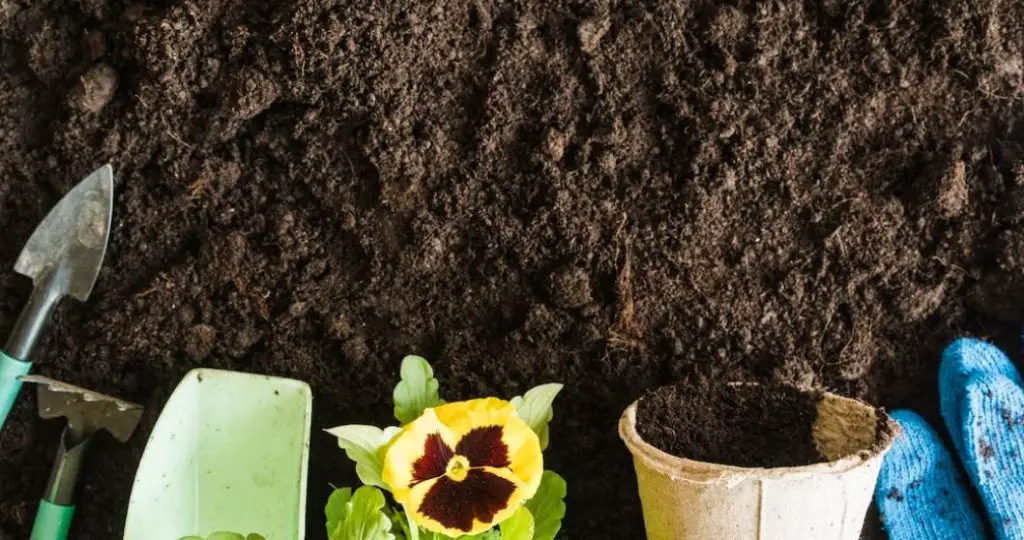
The Role of Organic Matter
Organic matter is an essential ingredient in improving and amending clay soil. It lightens the soil texture, discourages compaction, adds nutrients, improves drainage and aeration, moderates soil temperature, and provides pore space, essential to plant growth.
There are several types of organic matter that can be added to clay soil to improve its quality. Mulch, compost, leaves, and grass clippings are all good sources of organic material. Mulch is especially useful when applied to the soil surface as it helps to reduce soil erosion, retain moisture, and regulate soil temperature. Compost is another excellent source of organic material, and it can be made from a variety of materials, including kitchen scraps, yard waste, and animal manure.
Rotted manure is another type of organic matter that can be added to clay soil to improve its quality. Well-rotted manure is preferred as it has had time to break down and decompose, making it easier for the soil to absorb the nutrients. Composted manure is also a good option, as it has been broken down into a stable, nutrient-rich material that can be easily incorporated into the soil.
Leaf mold is another type of organic matter that can be added to clay soil to improve its quality. It is made by allowing leaves to break down over time, and it is an excellent source of nutrients for plants. Bark and shredded leaves are also good options for improving clay soil. They help to improve soil structure, increase water retention, and provide a habitat for beneficial microorganisms.
Humus is another type of organic matter that can be added to clay soil to improve its quality. It is the end product of the decomposition of organic matter, and it is a dark, nutrient-rich material that can help to improve soil structure and fertility.
Overall, adding organic matter to clay soil is an effective way to improve its quality and promote healthy plant growth. By incorporating a variety of organic materials into the soil, gardeners can create a rich, fertile environment that supports a wide range of plant life.
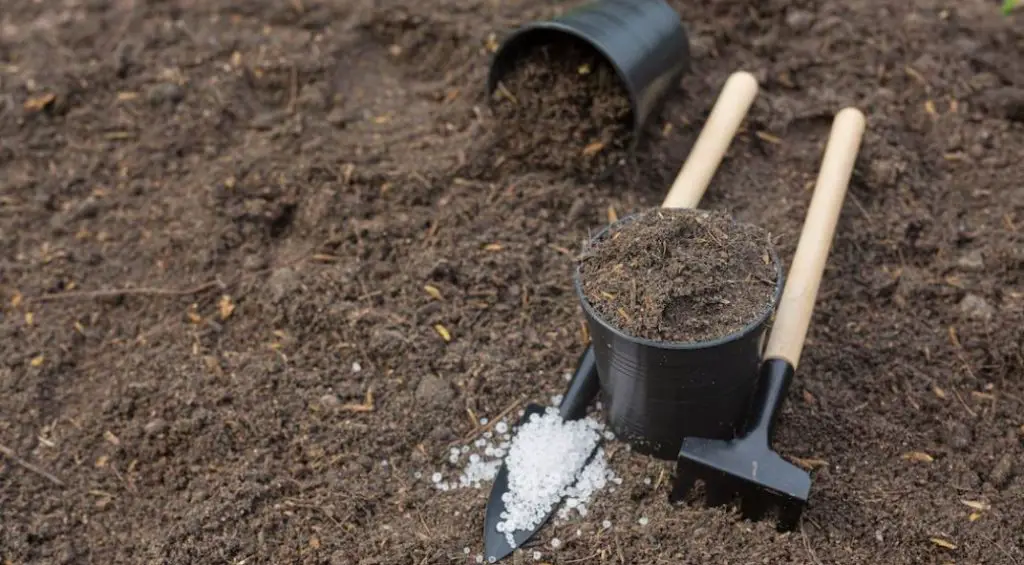
Amending Clay Soil
Amending clay soil can be a challenge, but it is possible to transform it into a rich, growing medium for plants. The best way to amend clay soil is to add organic matter, which lightens the soil texture, discourages compaction, adds nutrients, improves drainage and aeration, moderates soil temperature, and provides pore space, essential to plant growth.
There are several soil amendments that can be used to improve clay soil. Here are some of the most effective ones:
- Sand: Adding sand to clay soil can improve its drainage and aeration, but it should be done in moderation as too much sand can create a concrete-like mixture that is difficult for plant roots to penetrate.
- Silt: Silt is a fine-grained soil particle that can improve the texture of clay soil and increase its water-holding capacity. It can be added in small amounts to clay soil to improve its structure.
- Lime: Adding lime to clay soil can help raise its pH and reduce its acidity. This can improve the availability of nutrients to plants and increase their growth.
- Gypsum: Gypsum is a mineral that can be added to clay soil to improve its structure and drainage. It helps break up clay particles and allows water and air to move more freely through the soil.
- Peat moss: Peat moss is a type of organic matter that can be added to clay soil to improve its structure and water-holding capacity. It also adds nutrients to the soil as it decomposes.
- Sulfur: Adding sulfur to clay soil can help lower its pH and make it more acidic. This can improve the availability of certain nutrients to plants and reduce the risk of toxic buildup of others.
- Fertilizer: Adding fertilizer to clay soil can provide essential nutrients to plants and improve their growth. However, it should be done in moderation as too much fertilizer can harm plants and pollute the environment.
It’s important to note that different soil amendments work better in different situations, so it’s a good idea to test your soil and consult a gardening expert before adding any amendments. With the right amendments and proper care, clay soil can be transformed into a rich, fertile growing medium for plants.
Improving Soil Structure
Clay soil can be challenging to work with, but improving its structure can make a big difference in its ability to support healthy plant growth. One of the most effective ways to improve clay soil is by adding organic matter.
Organic matter helps to break up the dense clay particles, creating air pockets that allow for better water drainage and root growth. It also provides essential nutrients for plants to thrive. Some common organic materials that can be added to clay soil include:
- Compost
- Manure
- Peat moss
- Bark
- Sawdust
When adding organic matter to clay soil, it’s important to till it in thoroughly. This helps to distribute the organic material evenly throughout the soil, creating a more consistent growing environment.
Tilling can also help to aerate the soil, which is important for preventing compaction. Compacted soil can make it difficult for water to penetrate, leading to drainage problems and poor plant growth.
In addition to adding organic matter and tilling, there are other ways to improve soil structure and promote healthy plant growth. For example, using raised beds or containers can help to create a more controlled growing environment, while also allowing for better drainage.
Overall, improving soil structure is essential for creating a healthy growing environment for plants. By adding organic matter, tilling, and promoting good drainage, gardeners can help to ensure that their clay soil is able to support healthy plant growth.
The Role of Plants and Microorganisms
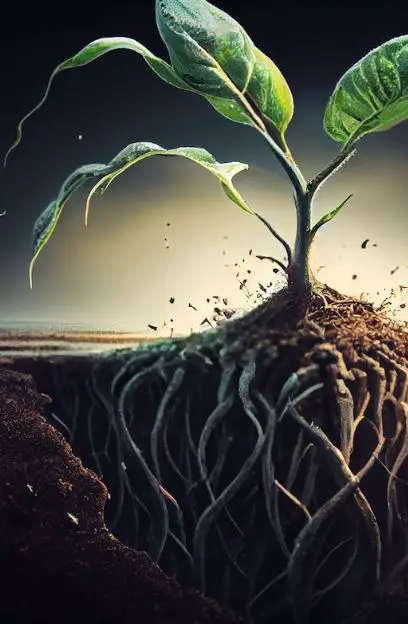
Plants and microorganisms play a critical role in improving and amending clay soil. They work together to enhance soil structure, nutrient availability, and water retention.
Plants
Plants are essential for soil health as they provide organic matter to the soil through their roots and above-ground parts. When plants die, their roots and leaves decompose and become part of the soil organic matter, which improves soil structure and fertility.
Plant roots also help to break up compacted clay soil by creating channels for water and air to penetrate. This allows for better water infiltration and drainage, which is essential for plant growth. Additionally, plants can take up nutrients and water from the soil, making them available for other organisms in the soil.
Microorganisms
Microorganisms, such as bacteria and fungi, are important for soil health as they decompose organic matter, release nutrients, and help to create a stable soil structure. They also form symbiotic relationships with plant roots, providing them with essential nutrients, such as nitrogen and phosphorus, in exchange for carbohydrates produced by the plant.
Worms are also important for soil health as they help to aerate the soil and break down organic matter. They create channels for water and air to penetrate, which improves soil structure and nutrient availability.
Cover Crops
Cover crops, such as legumes and grasses, are an excellent way to improve and amend clay soil. They help to add organic matter to the soil, improve soil structure, and reduce erosion. Cover crops also provide habitat for beneficial microorganisms and can help to suppress weeds.
In a vegetable garden, cover crops can be planted in between rows of vegetables or during the fallow season. They can be tilled into the soil or left as a mulch to decompose over time.
In conclusion, plants and microorganisms play a vital role in improving and amending clay soil. By working together, they can enhance soil structure, nutrient availability, and water retention, leading to healthier and more productive plants.
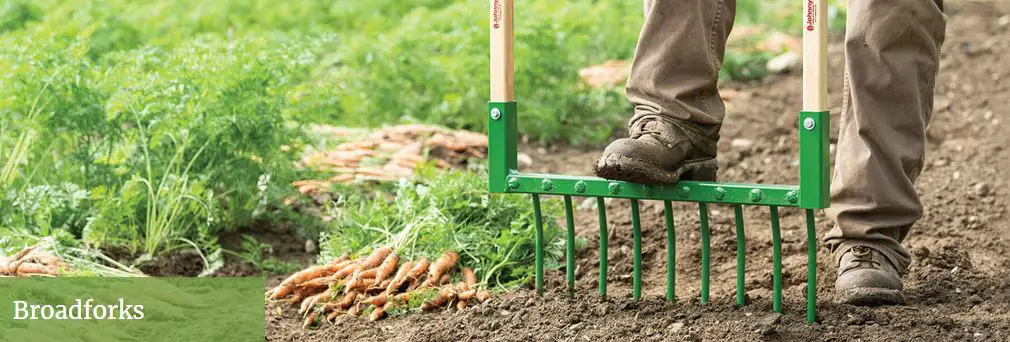
Gardening Techniques for Clay Soil
Clay soil can be a challenge for gardeners because of its dense and heavy texture. However, with the right techniques, it can be improved to create a healthy planting area. Here are some gardening techniques for clay soil:
Raised Beds
Raised beds are an excellent option for clay soil. They allow you to create a planting area with the right soil mix for your plants. You can add organic matter, such as compost, to the soil mix to improve drainage and aeration. Raised beds also make it easier to control weeds and pests.
No-Till Garden
Tilling can damage the soil structure and create more problems in clay soil. A no-till garden is a great way to improve clay soil without disturbing the soil structure. Instead of tilling, add organic matter to the soil surface and let it decompose. This will improve soil health and create a better environment for plants.
Broadfork
A broadfork is a tool that can be used to loosen the soil without disturbing the soil structure. It has long tines that are pushed into the soil and pulled back to create small pockets of air. This helps to improve drainage and aeration in clay soil. Using a broadfork can also reduce soil compaction and improve soil health.
Lawn
If you have a lawn in clay soil, it can be challenging to maintain. However, there are some techniques that can help. Aerate the lawn regularly to improve drainage and aeration. You can also add organic matter, such as compost, to the soil surface to improve soil health. Consider planting grass varieties that are well-suited for clay soil.
In conclusion, gardening in clay soil can be challenging, but with the right techniques, it can be improved. Raised beds, a no-till garden, a broadfork, and proper lawn maintenance are all effective ways to improve clay soil. By following these techniques, gardeners can create a healthy planting area for their plants.
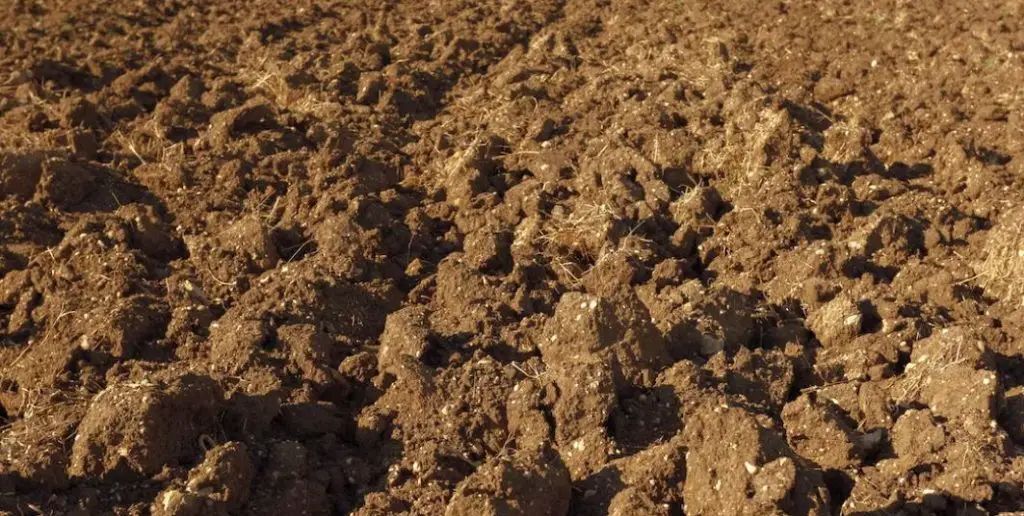
Other Considerations for Clay Soil
While amending clay soil is important for a productive garden, there are other considerations to keep in mind when working with this type of soil.
One important factor to consider is managing water. Clay soil has a tendency to hold onto water, which can lead to slow drainage and waterlogged plants. To combat this issue, it’s important to create proper drainage by incorporating organic matter and creating raised beds or planting on a slope.
Another consideration is the mineral content of clay soil. While clay soil is nutrient-rich, it can also be low in certain minerals like calcium. To address this, gardeners can add lime to the soil to increase calcium levels.
It’s also important to maintain healthy soil structure. This can be achieved by avoiding compaction, which can be caused by heavy machinery or even walking on the soil when it’s wet. Gardeners should also avoid using concrete or other non-porous materials in their garden, as this can limit the ability of nature to break down organic matter and create healthy topsoil.
Fall is an ideal time to work with clay soil, as it’s drier and easier to manage. Gardeners can use a shovel or tiller to incorporate organic matter like pine needles or rye into the soil, which will break down over time and create a healthy soil structure.
By taking these considerations into account, gardeners can create a healthy and productive garden even with clay soil.
Frequently Asked Questions
What is the best cover crop to amend clay soil?
The best cover crop to amend clay soil is one that can penetrate deep into the soil and break up the hard clay. Some good options include legumes like clover, alfalfa, and beans, as well as grasses like rye and oats. These crops help to loosen the soil and add organic matter, which improves drainage and nutrient availability.
How to improve clay soil for lawns?
To improve clay soil for lawns, it’s important to aerate the soil regularly to allow air, water, and nutrients to penetrate deep into the soil. Adding organic matter like compost, peat moss, or manure can also improve soil structure and provide nutrients for grass growth. It’s also important to choose grass varieties that are well-suited for clay soil, like tall fescue or Kentucky bluegrass.
What is the best compost for clay soil?
The best compost for clay soil is one that is rich in organic matter and nutrients. Compost made from a mix of materials like grass clippings, leaves, kitchen scraps, and manure is ideal. This type of compost helps to improve soil structure and drainage, while also providing essential nutrients for plant growth. It’s important to avoid using compost that is high in salt or weed seeds, as this can cause problems for plants in the long run.
